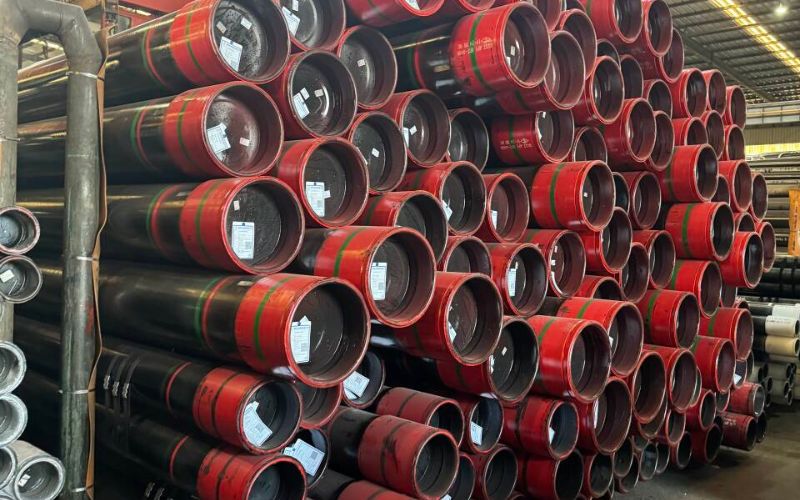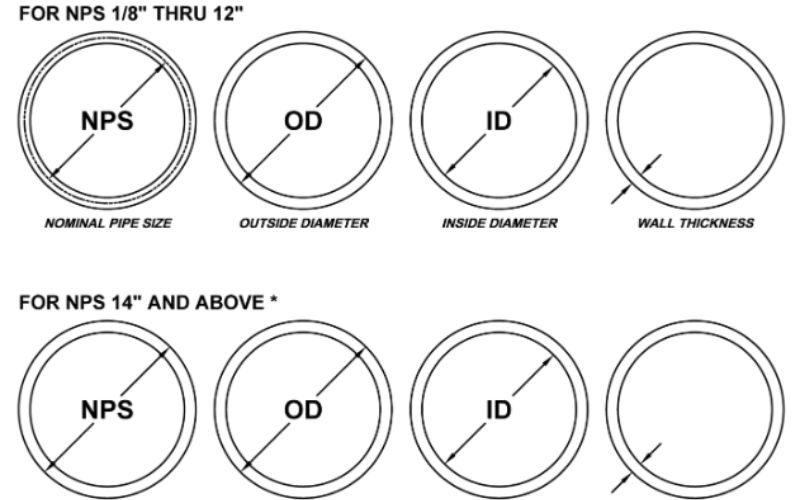Black Plastic Pipe: Understanding PVC, Polyethylene, and PEX Tubing
Black plastic pipes have revolutionized multiple industries with their versatility and durability. This comprehensive guide explores the differences between PVC, polyethylene (PE), and cross-linked polyethylene (PEX) pipes to help you make informed decisions for your projects.
Introduction to Black Plastic Pipe
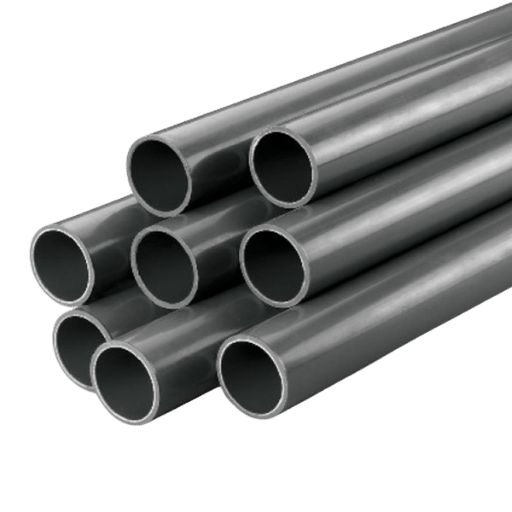
Commonly referred to as black pipes, PE pipes are becoming an extremely popular choice across many industries because of their working characteristics. These pipes, which transport water, gases, and other fluids under pressure, are durable, flexible, and slow to corrosion and great for residential, agricultural, and commercial applications.
A Peek at the Key Benefits
- Light construction – Easy installation and handling
- Resistance to environmental factors – Resistant to temperature changes and UV radiation
- An economical solution – Performs well in both short-term and long-term projects
- Long service life – Less maintenance and maintenance costs
What is Black PVC Pipe?
Black PVC pipe, or black polyvinyl chloride pipe, represents a thermoplastic piping solution engineered for enhanced durability and versatility. Manufactured from polyvinyl chloride resin with carbon black additives, these pipes offer superior UV resistance compared to standard PVC variants.
Applications and Advantages
Primary Applications:
- Irrigation systems
- Drainage solutions
- Plumbing installations
- Industrial processes
Key Advantages:
- Chemical resistance
- UV protection
- Lightweight design
- Easy installation
Types of Black Plastic Pipe: Comprehensive Comparison
Common Applications of Black Plastic Pipe
The black plastic pipes have widespread use in various industries for reasons including extrinsic strength, UV resistance, and affordability. Some primary areas and applications are as follows:
1
Draining Systems
Drainage of sewage and rainwaters make use of black plastic pipes that resist corrosion and are durable.
2
Irrigation Systems
Drip and sprinkler irrigation pipe systems use black plastic pipes that deliver water efficiently and maintain long-term reliability.
3
Protection of Cable
For long-term safety of underground cables, UV-resistant black plastic pipes are installed.
4
Industrial Uses
From a chemical and physical point of view, chemical processes, chemical transport, and pipe lines for gases use black plastic pipes for their effectiveness.
Advantages of Using Black Plastic Pipe
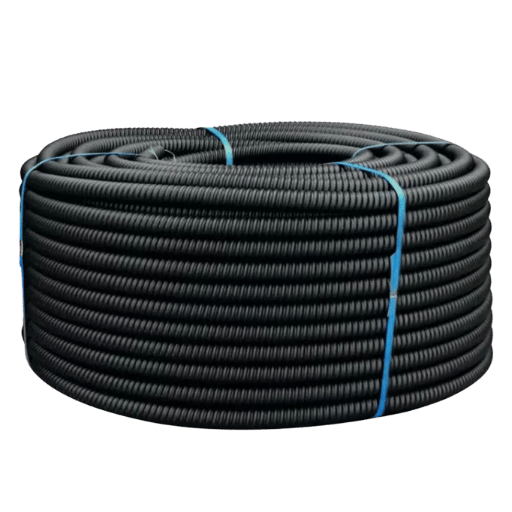
Durability and Longevity
In order to withstand different environmental conditions, black plastic pipes are made holistically for long-term applications. They provide anti-attack and anti-degradation against UV rays, corrosion, and temperature fluctuations, thereby ensuring longevity with almost no maintenance.
Durability Features
UV Resistance
Protected against sun damage
Temperature Stability
Handles extreme conditions
Low Maintenance
Reduces operational costs
Cost-Effectiveness of Black PVC and Polyethylene
The economic advantages of black PVC and polyethylene pipes come from their longevity, low maintenance, and durability under exposure conditions. Thus, it brings about enormous savings over the operational period of the pipe.
Economic Benefits
- Reduced replacement frequency – Long service life minimizes capital expenditure
- Lower labor costs – Easier installation reduces project time
- System compatibility – Works well with existing infrastructure
- Optimal price-performance ratio – Best value compared to alternative materials
Resistance to Corrosion and Chemicals
For anyone requiring top-notch chemical resistance, consider black PVC and polyethylene pipes. Another name for it: non-reactive, which means it can stay intact when presented in acids, alkalis, or all kinds of solvents. Due to this, applications in industry and the environment cannot function without it.
Installation Tips for Black PVC Pipe
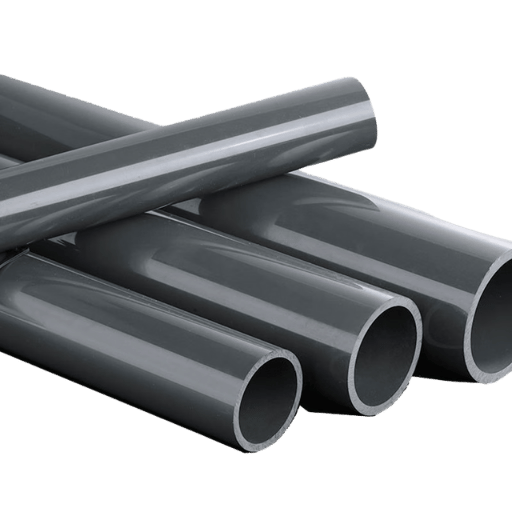
Choosing the Right Pipe Diameter and Schedule Type
Making sure the pipe diameter and schedule are chosen properly guarantees optimal system performance. To do so, one must consider flow rate requirements, pressure conditions, and the working environment.
Selection Criteria
- Flow Rate Analysis – Determine required internal diameter for efficient flow
- Pressure Requirements – Select a schedule type that can handle system pressure
- Temperature Considerations – Ensure material can withstand operating temperatures
- Safety Margins – Include appropriate safety factors for reliable operation
Tools and Hardware Needed for Installation
An appropriate installation process warrants tools and hardware to attain system integrity and performance. Having the tools needed for the equipment assures a smooth installation and the prevention of common issues.
Cutting Tools
- Pipe cutters or saws
- Measuring tape
- Marking tools
Assembly Tools
- Pipe wrenches
- Threading tools
- Sealants and Teflon tape
Support Hardware
- Fasteners and supports
- Clamps and brackets
- Level and plumb line
Step-by-Step Installation Process
Layout Planning
Supervise and review system diagrams for connection points, offsets, and fittings. Take measurements with utmost precision so as not to cause misalignment during installation.
Pipe Preparation
Cut pipes to the required lengths using appropriate tools. Deburr and smooth all edges to prevent leakage or damage during assembly.
Alignment Marking
Mark alignment points on walls, ceiling, or floor using a level and a plumb line to guide proper pipe routing.
Support Installation
The application of various shoes, clamps, and supports shall be carried out at regular intervals so that they shall prevent sagging or vibration. The application of all fasteners shall be undertaken as specified.
Pipe Assembly
Align according to the layout all pipes, making sure that the joints and couplings are properly seated. Threaded connections require an application of thread sealant or tape.
Connection Tightening
Mend using appropriate tools to avoid overtightening, which risks thread damage and cracking.
System Testing
Conduct pressure testing or leak detection to identify issues early and implement corrective measures before full operation.
Final Commissioning
Gradually introduce fluid or gas into the system while monitoring for irregularities. Address any issues to ensure safe operation.
Maintenance Advice for Black Plastic Tubing
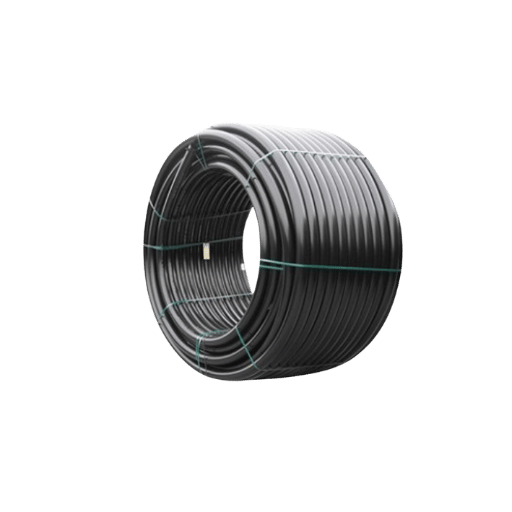
Regular Inspection and Cleaning Tips
Smooth black plastic tubing needs regular inspection and cleaning to ensure maximum efficiency and long working hours. If attended to on time, minor problems may not arise into costly ones.
Essential Maintenance Checklist
Visual Inspections
- Check for cracks or damage
- Inspect fittings and connections
- Look for UV deterioration signs
- Examine surrounding areas
Cleaning Procedures
- Flush system periodically
- Clear obstructions promptly
- Clean external surfaces
- Remove organic growth
Identifying and Fixing Common Issues
When to Replace Your Black Plastic Pipe
The time to change black plastic pipes will be the moment the maintenance of the tilting surface and avoidance of a costly breakdown is in question. A series of signs may indicate a need for a pipe replacement to sustain further reliable operation.
⚠
Replacement Warning Signs
- Visible cracks – Structural integrity compromised
- Persistent leaks – After attempted repairs
- Pressure loss – Consistent system underperformance
- Discoloration – Chemical or UV damage indicators
- Brittleness – Material degradation from exposure
- Deformation – Temperature-related damage
- Recurring blockages – Organic growth or debris accumulation
- Safety concerns – Any risk to system operation
Common Issues with Black Plastic Pipe
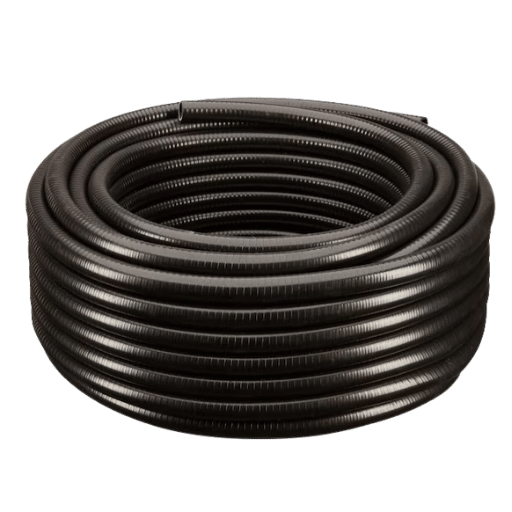
Cracking and Damage: Causes and Solutions
Knowing about the cracking and damage mechanisms of black plastic pipes will help one with proactive prevention and repair mechanisms. Environmental factors and installation methods maintain pipe life span.
Common Causes
- Ultraviolet Exposure – Sunlight degradation for long periods
- Mechanical Stress – Being hit by an external force or pressure
- Temperature Variations – Thus, expansion or contraction
- Chemical Exposure – Substances inappropriate to pipes
Prevention Solutions
- UV Protection – Avoid direct sunlight
- Careful Handling – Employ the right installation methods
- Temperature Control – Keep under suitable temperature conditions
- Chemical Compatibility – Check chemical compatibility
Clogging in Drain Pipes and How to Prevent It
Drain pipe clogging represents one of the most common maintenance challenges. Understanding prevention strategies and implementing proper maintenance practices significantly reduces blockage incidents.
Prevention Best Practices
Avoid Grease Disposal
Never pour oil or grease down drains
Use Strainers
Install filters to catch solid particles
Regular Flushing
Hot water and natural cleaners
Proper Slope
Ensure adequate drainage gradient
Understanding Water Pressure and Pipe Performance
Water pressure accounts for much worth as the basic factor influencing efficiency and durability in the plumbing system. Proper pressure levels also permit proper flow distribution and avoid damage to the system.
Optimal Pressure Guidelines
Optimal Range
40-60 PSI
Ideal operating pressure
Low Pressure
<40 PSI
Poor fixture performance
High Pressure
>60 PSI
Risk of pipe damage
Target Audiences and Applications
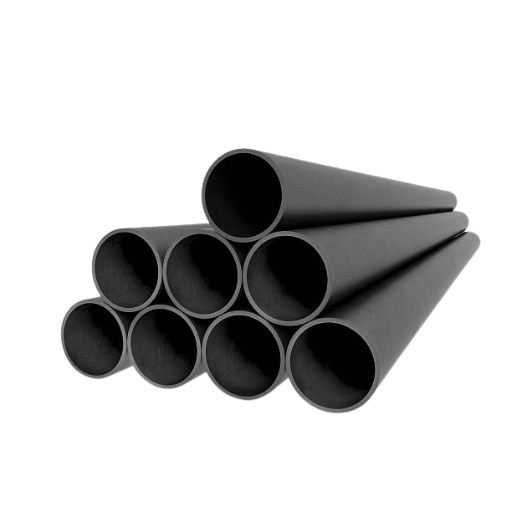
Who Uses Black Plastic Pipe?
Diverse industries and applications use black plastic pipes, polyethylene, and HDPE versions to fulfill particular needs among various industries. Knowing these uses can help you figure out which pipe would best suit your requirements.
🌾
Agricultural Sector
Because they resist corrosion and handle pressure well, farmers make wide use of black plastic pipes in irrigation configurations.
- In drip irrigation networks
- Sprinkler system distribution
- Water storage connections
🏗️
Construction Industry
Construction contractors will appreciate black plastic pipes for their being lightweight and cheap for a number of applications.
- Water management systems
- Drainage installations
- Temporary water lines
🔧
Residential Plumbing
Homeowners and plumbers choose black plastic pipes for reliable, long-lasting water supply and waste management solutions.
- Water supply lines
- Septic system connections
- Well water applications
Growing Trend: Green Projects
Existing search trends indicate an upward trajectory in demand for black plastic pipes for water and energy systems, representing an increasing trend for truly green roofing construction.
Frequently Asked Questions (FAQs)
❓ What benefits occur in the employment of black plastic pipe in plumbing?
Being lightweight and highly durable, polyethylene black plastic pipes make an excellent choice for various plumbing needs. Being corrosion-resistant, they carry both hot and cold water effectively. Their flexibility allows for easier installation in tight places, and black plastics become less brittle as they grow older compared to other materials.
❓ What differentiates schedule 40 from schedule 80 black plastic pipe?
Being thinner in wall, schedule 40 black plastic pipe finds use under relatively low-pressure applications. On the other hand, schedule 80 with thick walls resists high pressures but cannot be used for low-pressure assemblies. Both are made in different diameters and lengths as required by the customer.
❓ How do I find the true outside diameter of black plastic pipe?
With a black plastic pipe, different values of actual outside diameter (OD) may be obtained both with schedule and size variations. You can obtain OD by consulting manufacturer specifications or by measuring with calipers. This OD measure is very important in selecting fittings and connectors so that they fit well.
❓Is black plastic tubing suitable for irrigation and water gardens?
Yes, black plastic tubing serves as a perfect system for irrigation and water garden setup. The other complementary qualities are UV resistance and flexibility, and so they should be kept outside. This allows water to be transferred efficiently to plants in any climatic conditions, which makes them durable for long.
❓ What types of fittings and connectors are made for black PVC pipe?
There are different fittings and connectors used with black PVC pipe, including elbows, tees, and couplings. The fittings are made to fit the actual OD of the pipe to form secure connections. Most hardware stores carry them to suit a wide array of plumbing and DIY applications.
❓ Is black polyethylene pipe suitable for natural gas use?
Black polyethylene pipes are suited for natural gas applications chiefly because of their durability and resistance to corrosion. To confirm if the product can be used for gas applications, it is always better to check local regulations concerning the same. Always seek the advice of competent plumbers or contractors in gas line installation.
❓ How do I stop leaks when installing black plastic pipe?
Leaky connections can be avoided by making sure all fittings and connectors are tightened properly and secured with clamps when necessary. Use pipe thread sealant to assure leak-free joints on all threaded connections, and inspect every joint after full installation of the system.
❓ Are black plastic pipes usable for DWV systems?
Black plastic pipes do well in drain, waste, and vent (DWV) systems. These pipes have smooth inner surfaces for quick draining, while their less rigid nature allows for easy preparation around obstructions. Always ensure it complies with local plumbing code specifications before use in DWV applications.
Reference Sources
1. Consider using rigid PVC tubing for enhanced durability. Title: Stabilization of Black Cotton Soil Using HDPE Plastic
- Authors: S. Naik, U. Naik
- Publication Date: November 12, 2016
- Citation Token: (Naik & Naik, 2016)
- Summary: This paper discusses the topic of stabilization of black cotton soil by HDPE (High-Density Polyethylene) plastic. The study focuses on the ability of HDPE to be utilized as a modifier to improve the engineering properties of expansive soils, which cause trouble in construction. The methodology involved laboratory experiments relating to the physical and mechanical characteristics of soil after admixture with HDPE.
2. Title: Effect of Silver Black Plastic Mulch and Organic Fertilizer Dosage on Plant Chlorophyll Growth and Content Cayenne Pepper (Capsicum annum L.)
- Authors: Valeria Gifridus et al.
- Publication Date: April 27, 2024
- Citation Token: (Gifridus et al., 2024)
- Summary: This study investigates the effects of silver black plastic mulch on the growth and chlorophyll content of Cayenne Pepper plants. The research has been designed in randomized blocks with different treatment combinations of mulch and organic fertilizer. The results have shown that the use of silver black plastic mulch increases plant growth and chlorophyll content significantly; hence, it is very beneficial in agricultural practices.



